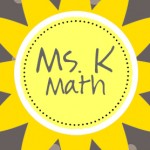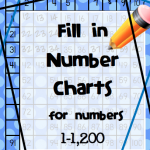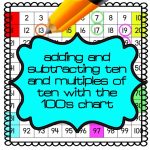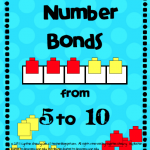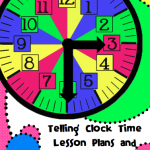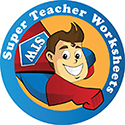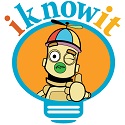Are Your Students Struggling with Learning Subtraction Regrouping?
Two years ago I was introduced to math number discs and began using them in my classroom. I have come to rely on teaching regrouping using the math number discs after modeling regrouping with base ten blocks on a mat. These number discs (which are really expensive to purchase) are marked with 1’s, 10’s, and 100’s. An inexpensive alternative to using the ready made number discs is buying colored bingo chips and writing numbers on these yourself. Every place value position is a different color. The ones are white, the tens are red, the hundreds are orange, and the thousands are yellow. Students group the discs to represent a number on their place value mats and then take away the needed discs. Moving the discs around on the mat themselves does not seem to help students make the connection as much as having them draw and mark out the discs as they subtract. When they notice there are no more discs to mark out in the tens place for example, students realize they have to borrow from the hundreds place, mark out a hundred disc, and draw ten tens discs. If you scaffold this understanding to the actual borrowing and show students that when you borrow from the hundreds place to bring over ten tens, students have a light bulb moment and see the connection to all the marking out and rewriting of numbers that occurs in the abstract algorithm we call subtraction with regrouping.
Also, I am including a link below to my July 14th post in which I am showcasing a Smart Board lesson and practice pages that I created using interactive number discs.
Become a Crewaholic and Save
Besides changing your students’ lives, teaching has several perks such as a discount on purchasing a new wardrobe. This discount can be obtained at J Crew which offers a 15% discount to teachers and students off of full priced merchandise. To see for yourself follow this link: http://jcrewaholics.com/discount/changes-to-jcrew-student-teacher-discount/.
Does Wanting What’s Best for Your Child Warrant Jail Time?
That is what the city of Norwalk Schools seems to believe. This past week a homeless woman was charged with larceny and conspiracy for sending her six year old to the Norwalk school system in Connecticut. She may suffer the consequences of up to 20 years in prison and a $15,000 fine for using the false address of a friend to send her child to a better school system. Follow this link to read the rest of the story: http://www.nydailynews.com/news/national/2011/04/26/2011-04-26_homeless_woman_tanya_mcdowell_due_in_court_on_charges_she_illegally_enrolled_son.html
Are Your Students Bored with Stickers and Stamps…Try Smellys
To reward your students, try smellys. Students love smellys. Smellys are when you put a happy face on the back of a child’s hand using scented chapstick or the like. If you have several flavors of chapstick, students will want all of the flavors on their hand. For example, if you have banana, cherry, and chocolate, students could progressively gain all of the scents during a day for their good behavior to accumulate the scent of a banana split.
Build Number Sense Playing This Addition Game
One of my favorite math games for elementary math students to play is “Close to 100”. This lesson and game can be found in TERC math Investigations books for third grade. The game instructions, number card blackline masters, and score sheets are in the unit Mathematical Thinking. In this game one student of a pair draws six numeral cards (0-9) without looking from a deck and selects four cards to use. With these four cards students are to build two two-digit addends to find a sum as close to 100 a possible. The player’s score is how far away from 100 the sum is. For example if the sum is 102, the score is 2. If the sum is 95, the score is 5. Each player totals up his scores at the end of the game, and the player with the least score wins. What I like so much about this game is that students are practicing facts, learning place value, buildingnumber sense, adding, and subtracting while they are engaged in cooperative learning. The only quibble I have with this lesson is that the only assessment to be gathered is informal teacher observation. To make up for the lack of assessment provided in the lesson, I recommend that after playing the game to give students a scenario in which they draw six cards. Have students write about which of the cards they would chose to use to get as close to 100 as possible. To differentiate this lesson, struggling students can pull only 5 cards and choose 3 number cards to make 20 (First grade Mathematical Thinking book), or advanced learners can pull 8 cards and choose 6 to build 1000 (Fifth grade Mathematical Thinking book).
See an example of this game here: http://www.pearsonschool.com/live/images/custom/investigations/Investigations_widget1.html.
|
|
|
|
|
|
Score
________ ________ + ________ ________ = ________
Estimate Length Using Your Classroom Floor or Wall
This idea comes from the Calendar Math curriculum and it evolved with other teachers’ ideas. Allow your students to estimate the length of placing a foot on your floor or wall every day of the month (usually about 30 feet). Allow students to put their initials on masking tape and mark where they think the 30 feet will stop. About midway through the month, allow students to change their predictions based on how long the line is. Offer a reward for the closest estimates. You will have to use legal sized paper to copy inch squared grid paper with 12 inches for a foot. Although it becomes messy, allow students to tape these down. They become more engaged in the activity. Copy the foot strips in two different colors to alternate them on the floor so that each foot will stand out. 
Need to Increase Student Enagement During Testing Practice
After students answer multiple choice questions during testing review, get a quick assessment by having students stand to their feet or raise their hands if they picked A, B, C, or D. You will be able to quickly see what most students chose and whether you need to reteach the concept. This also keeps students alert and engaged during review because they are curious what their friends picked and want to know if they are wrong. The quicker you call out A, B, C, or D the more honest your students will be about their answers because they won’t have time to look at whose hands are in the air for each letter. This testing review will especially reach your kinesthetic learners if you choose to have them stand up for their answer choice.
Make Algebraic Thinking Easy for Your K-2 Students
One of my favorite lessons to teach comes from comes from Marilyn Burns’ Lessons for Algebraic Thinking, Grades K-2. This lesson is called Two of Everything. While this lesson is very wordy to read, as are most of Marilyn Burns’ books, the heart this lesson is very valuable. In this lesson the teacher reads to the students the book called Two of Everything by Lily Toy Hong which is about a couple that drops items into a magic pot and they double (excellent book). This book provides an solid foundation for students to conceptually understand input/output tables because items are being put into a magic pot (input) and items are being taken out of (output) a magic pot. Then students create their own magic pot patterns on their own input/output charts. When teaching this lesson, I like to get students attention for guided practice by bringing in a magic container of my own and already having some items stowed inside to pretend its magic as I show them other possible inputs and outputs for the table. In this lesson students do work on blank paper and draw their own pots and t-charts. However, I like to have prepared sheets for students to use especially when I have limited class time. Math wire happens to have a sheet that fits perfectly with this lesson–just follow the link.http://www.mathwire.com/algebra/magicpotworkmat.pdf.
Are Your Students Struggling with Counting Money?
If your students have difficulty counting coins a few things will help. A few things I have tried work well.
- Practice adding 10 more and 10 less on the 100’s chart with any number so that students recognize the patterns when adding 10 to a number. Discuss these patterns.
- First, begin counting money values with students without coins. For example, add 25, 5, and 10 randomly on the board and discuss with students how they decided to add the numbers and relate this to money. Some students may see 25 and 10 make 35 and then add 5 to make 40. Others will add 25 and 5 to make 30 and then add 10 to make 40. Having the class discuss the ways students add numbers and the most efficient ways strengthens students’ abilities to add coin values. (from Van DeWalle’s Elementary and Middle School Mathematics)
- Use coin antennas for students who struggle with counting. Antennas are the marks you make on each coin that stands for a value of 5. A quarter would have five antennas, a dime would have two, and a nickel one. If students struggle too much with number sense, then they can count by 5’s after they mark each coin. (from http://www.mathwire.com/money/money.html)
